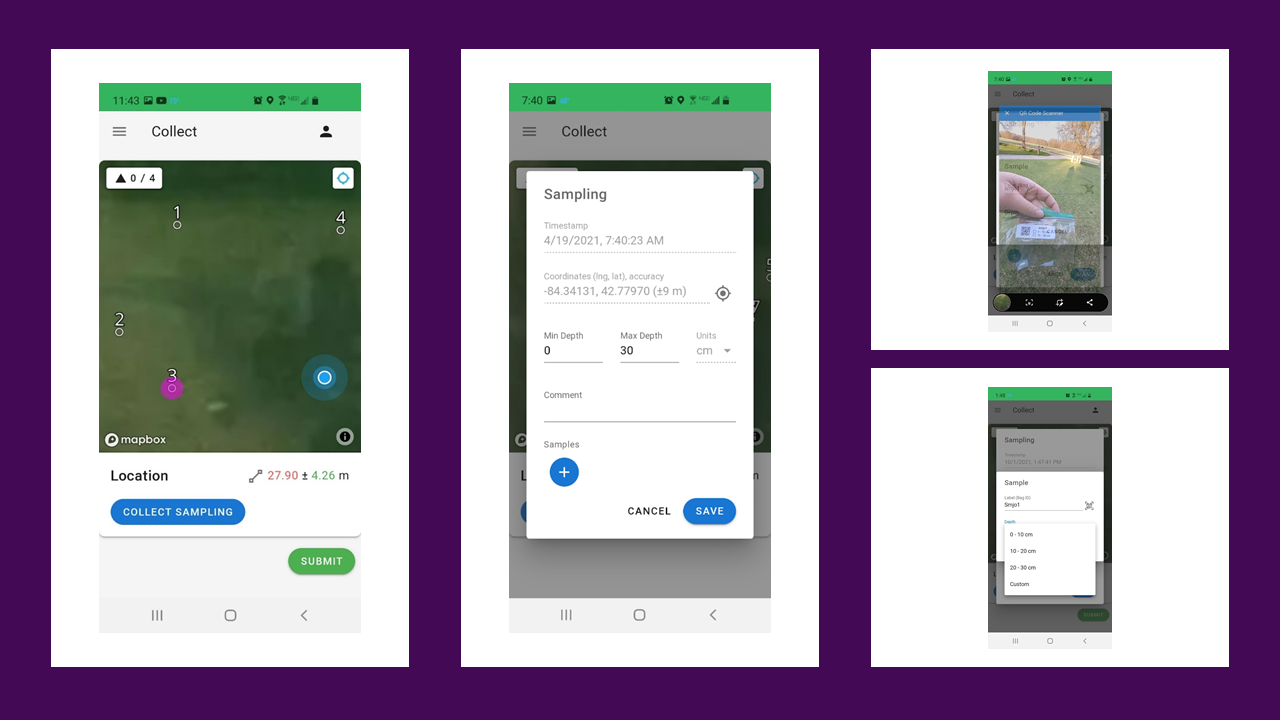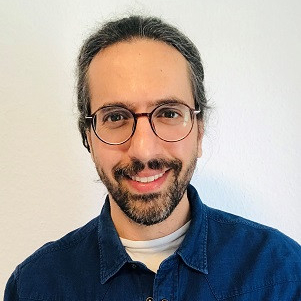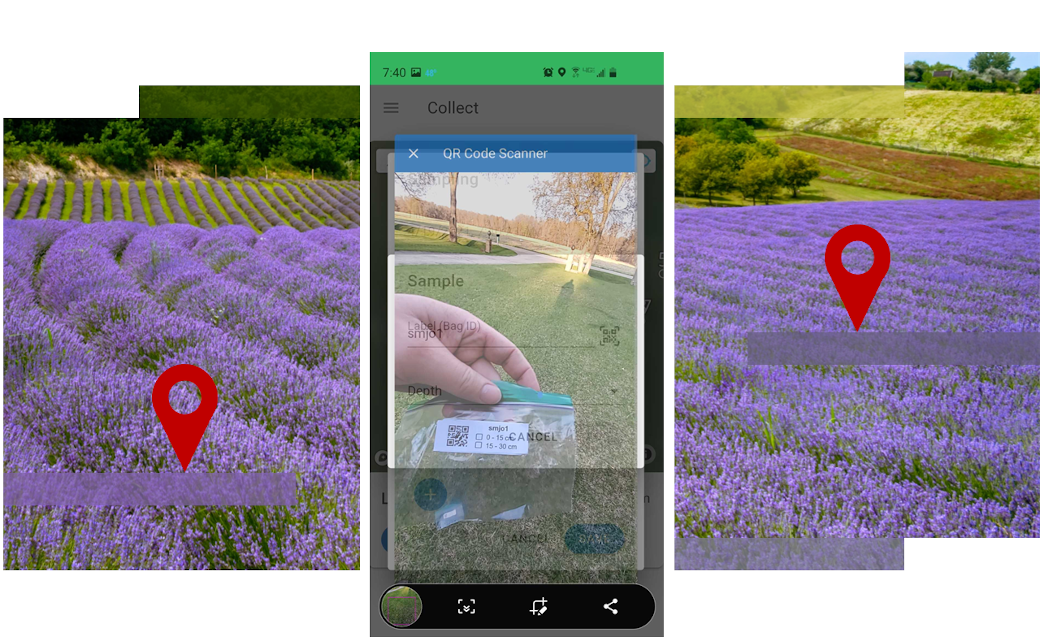“At CarboFarm, we want to deliver token economics in such a way that there will be an incentive for the farmer aside from certificates. At CarboFarm, we value the cobenefits of carbon farming. SoilStack is a very good starting point in that it helps us bridge the information gap between companies, which is needed in order to say to a soil sampler ‘Please, do that field on this day. These are the sampling points, and please be very precise by following the SoilStack procedure.‘ This is a deciding factor for us to get accurate measurements that we can rely on,” details Stefan Fölser, cofounder of CarboFarm in our interview.
“Next, we aim to establish an European Cooperative, in which we would like to involve our farmers’ associations and like-minded organisations. Building out the community with farmers is the most important topic for us, together with setting up our token economics.“
Contact Stefan Fölser with your interests in CarboFarm.
For a SoilStack walkthrough contact soil scientist and Our Sci cofounder Dr. Dan TerAvest
Sebastian Klemm: What is the mission of CarboFarm, and how do you achieve it?
Stefan Fölser: The mission of CarboFarm is simply to make healthy soils. To achieve that we initially started out with a carbon farm programme.
My background is in aviation. I was working the last 30 years in the aviation industry as an engineer. I however grew up on a farm. My brother and his kids are still in agriculture. So is my father, still in agriculture, even at the age of almost 80. – Here are my roots.
A short time before the Covid19 pandemic hit, and having spent the last seven years there with blockchain technology for the aviation industry to secure parts of its certificates, I said ‘I think we can do something better with that.‘
Next, I came across the TEDx talk by Allen Savory “How to fight desertification and reverse climate change” – and immediately said That’s it! That is what I want to go for! – From there, I have done some research by myself and finally got in touch with a farmer due to the support of the German Farmers Association – Genossenschaft für konservierende Bodenbearbeitung – GKB e.V. who forwarded me to Reto Stocker, a swiss farmer who had moved with his family to Hungary.
Reto Stocker connected me with Zsombor Dirizi, who runs several agro businesses and who coined the term regenerative agriculture within the Hungarian language. Both are members of the Hungarian regenerative Farmers Association TMG – Talajt Megújító Gazdak Egyesülete.
We all together then started working on CarboFarm and the company was established officially last year. Along the way, the project has broadened my understanding, since sequestering CO2 as part of carbon farming is more or less only the tip of the iceberg. Our CarboFarm’s mission is to help farmers produce healthy soils, and this is about much more than just selling certificates.
Sebastian Klemm: How did you meet Our Sci, and how does their open source software SoilStack serve your mission at CarboFarm?
Stefan Fölser: While I conducted research on soil spectroscopy, I found Quick Carbon – to which Dan TerAvest and the Our Sci team have been contributing as a partner – and via Quick Carbon’s use of Our Sci’s Reflectometer I finally learned about and got to meet with Our Sci.
We use Our Sci’s SoilStack intensively for our investigation, when we are enrolling a farmer and planning the stratification. We do NDVI stratification first, and then Dan TerAvest and Our Sci are processing where the sampling points are. Through SoilStack we then publish these to the soil samplers, so they can collect and make the right composites and labeling, which we then send to the laboratory.
In fall of this year, when we will collect the baseline data in regard of “What is the five years management history of particular fields that farmers have enrolled?” – For that, we will apply a combination of the Cool Farm Tool together with Our Sci’s SurveyStack.
Sebastian Klemm Which gaps can you effectively bridge with SoilStack?
Stefan Fölser: SoilStack enables a very clear communication with soil samplers. Before, there was nothing like that, you exchanged some information, somehow on sheets of paper or via word documents, which then got converted into sampling points with GPS longitude and latitude coordinates. We did not even try such an approach really, since I have seen what others are doing. I shaked my head and said “This is too cost intensive. That does not work in the long term.”
I believe that with software that we have available today, you can quickly develop tools to bring down the cost for enrolling somebody in a carbon farming programme. This is quite relevant, since in the first years you need to invest into the programme while you do not yet see any revenue coming in from sold carbon certificates for example.
SoilStack is a very good starting point in that it helps us bridge the information gap between companies to share the information that is needed in order to say to a soil sampler ‘Please, do that field on this day. These are the sampling points, and please be very precise by following the SoilStack procedure.‘ This is a deciding factor for us to get accurate measurements that we can rely on.
This has otherwise been the challenge so far. Particularly, when we tried to establish our carbon farming programme where we had to convince the farmers. In Hungary, where we are, they are following a standard with zig-zag methods for five hectare fields, but no GPS records! Thus, what you sample is something. Yet, when farmers are switching soil sampler companies and laboratories, one ends up with a mishmash, where it is very difficult to say Yes, you have increased something nor can become clear that what you are seeing is just a measurement error.
Thanks to SoilStack, we are creating a repetitive process. Even with another soil sampler sampling the same field two years later, we ensure results with high quality data, which we can then compare, and which ensure that we are comparing apples with apples, indeed.
Hands down, there is nothing accurate, because it is always an estimation at the end of the day. Yet, SoilStack is doing a really great job for a highly reliable outcome, and it keeps getting better.
Sebastian Klemm: Beyond captured carbon, which further indicators and use cases do you plan to apply SoilStack for in the near future?
Stefan Fölser: Definitely biodiversity and water filtration. These are on the top of our list, because they are key values in regard to what constitutes and determines healthy soil, and which as a value we can then attribute to the farmer.
We may be implementing biodiversity and water filtration indicators through a combination of both the Our Sci open source software tools SoilStack and SurveyStack – as Dan TerAvest has already detailed in your previous interview:
“By enabling SoilStack to access and run SurveyStack surveys, and by working with the community to develop trusted data systems around environmental claims, users can collect interoperable data using transparent tools to complete soil health, biodiversity, or other assessments that can back up those resilience claims.“
Dan TerAvets, cofounder of Our Sci LLC
Sebastian Klemm: How can SoilStack help to have natural capital inform financial decisions and to attract finance? How can improvement of ecosystem services work beyond commodification? – Doing something, proving it and ultimately selling it? – How can farmers be empowered with what they have in their hands? Is the issue around data cooperatives, so that carbon farming is not a sell out through the commodification of nature?
Stefan Fölser: Excellent questions, and tricky to answer. I have just read the article Soil “Ecosystem” Services and Natural Capital: Critical Appraisal of Research on Uncertain Ground. Its authors, both soil scientists as well as experts in economics and finance, are elaborating on what you are asking. They detail measurements, comparability and evaluation.
While in Brazil you may be able to sequester 48 tonnes of CO2 a year on one hectare, you may not be able to do so in the United States or in Hungary where we are based. Hence, you cannot say one tonne of CO2 is worth 45 euros, because the way you produce and sequester one tonne in Brazil is way different than in some places in Europe, for example. You therefore have local markets.
Now, for farming to go beyond commodification, we need to learn to think in cycles. We need to give back to the soil. Otherwise, the soil will not stay healthy. The more machines we have put on the fields in the last sixty to eighty years, the more we took out and did not give back to the soil, that is why so many soils are degraded today. We really need to do something in order to, to think in cycles to give back and to fill the soil back with biology and life again.
This is where I see SoilStack as a great decision tool that can help farmers to comprehend “Okay, this is where I am standing right now at my location and context. This is how the condition of my soil biota, and this is what I can do.”

Sebastian Klemm: In your introduction you detailed your background in the aviation industry where you were working with blockchain technologies. How do you see that blockchain, token economics and NFT can add to the certification of carbon farming? How can they empower the farmers, for example when farmers still keep their data and only sell the proof of it?
Stefan Fölser: We see possibilities and are working on it, in order to come away from just selling a certificate to somebody in need. Recently, the German Farmer’s Association DBV published a press release (in German) in response to the European Commission’s publication on sustainable carbon cycles. The DBV emphasizes that all sectors must reduce avoidable emissions of greenhouse gases as much as possible, and that limiting carbon farming to agricultural policy does not do justice to its potential and will slow down its widespread implementation. Additional climate benefits must be financed by additional funds, for example from emissions trading. There is an urgent need for a scientifically sound and reliable EU-wide framework so that private operators can work with agriculture to drive sustainable carbon sequestration.
At CarboFarm, we want to deliver token economics in such a way that there will be an incentive for the farmer aside from certificates. While soil carbon is a good indicator, it is only the tip of the iceberg, in my point of view. At CarboFarm, we value the cobenefits of carbon farming. We sit with the farmers and build the corresponding blockchain applications together.
Sebastian Klemm: What are the next challenges you aspire to tackle with CarboFarm?
Stefan Fölser: We are working on team building and scaling. Scaling refers to the fourteen sub projects that we have determined that we need to fulfill and develop over the next two years. For that, we are looking for team members who can work on them. We have already one organisation that we will deploy as a development company to establish an European Cooperative.
Next, we aim to establish an European Cooperative, in which we would like to involve our farmers’ associations and like-minded organisations. Building out the community with farmers is the most important topic for us, together with setting up our token economics.
Contact Stefan Fölser with your interests in CarboFarm.
For a SoilStack walkthrough contact soil scientist and Our Sci cofounder Dr. Dan TerAvest






